On July 8th and 9th this year, ETS will host our second annual TEC Expo event. The Technology Enhanced Classroom (TEC) Expo is an annual event designed to showcase and celebrate creative, innovative, and effective uses of technology in face-to-face, hybrid, and online classrooms within the Faculty of Education.
This year the event will be held from 3:00 to 5:00 pm on each of the two days. The first day will have instructors showcasing the technology they use in the classroom, and the second day will feature students presenting educational technology they are passionate about.
TEC Expo uses technology to enhance the traditional poster session format, with presenters able to dynamically showcase their courses on electronic displays. While browsing between the tables, visitors are able to view demos and engage in conversation with presenters.
Don’t Miss!
On July 8th, 2015 TEC Expo 2015 will kick off with Sixty Seconds of Fame, where faculty presenters will have exactly one minute to tell us about their topic. What happens if they go over time? We can’t say for sure, but it might involve a gong.
On July 9th, 2015 TEC Expo 2015 gives you an opportunity to play at our Mini Maker Space, where you can interact and experiment with play-based technology tools. Get your hands on Squishy Circuits or Raspberry Pi at this hands-on station!
Presenter Information

Online Literature Circles
Marianne McTavish, Senior Instructor, LLED
Literature Circles, derived from reader response theory, is a collaborative and student-centered reading strategy that provides students with opportunities to engage in critical thinking and reflection about texts. Literature circles are often used in face-to-face classroom contexts that highlight discussion, student response, free choice and collaboration. This presentation will focus on how literature circles can be used very successfully with students in online environments, and in particular, with UBC’s Connect platform.

Using the PeerWise Online Resource to Promote Collaboration in Methods Courses
Marina Milner-Bolotin, Assistant Professor, EDCP
The presentation will showcase how a free on-line collaborative resource, PeerWise (https://peerwise.cs.auckland.ac.nz/), can be used in methods courses to promote teacher-candidates’ collaboration on designing conceptual multiple-choice mathematics and science questions. Our research team has collected research evidence proving that this collaboration helps teacher-candidates gain Pedagogical Content Knowledge in the field as well as acquire important skills in question-driven inquiry-based pedagogy.

Video Lecturing Using Camtasia
David Anderson, Professor, EDCP
This showcase will feature how Camtasia can be used to create and integrate video lectures using Powerpoint, and how these affect online course delivery.

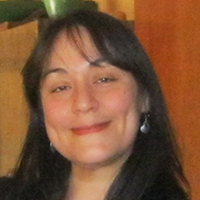
Preventing Academic Misconduct in Online Adult Education Courses
Dave Smulders and Carolina Palacios, Sessional Instructors, EDST
The combination of mainstreaming of online courses at UBC and opening up registration of adult education courses to a wider target audience over the past few years has resulted in many more students enrolling in Adult and Higher Education (ADHE) courses than ever before.
As the student numbers increase, so have the incidences of suspected academic misconduct. While the Internet and social media have impacted academic misconduct, online digital tools can also be utilized to help ensure student work is done sincerely and originally. In this presentation, we share what we have learned and consider potential solutions that can both reduce academic misconduct and enhance the teaching and learning experience.
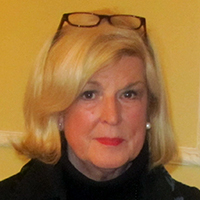
Teaching Children’s Literature Online
Kathryn Shoemaker, Adjunct Professor, SLAIS, Sessional Instructor, LLED
This presentation focuses on creating and teaching an online class on teaching children’s literature that includes interactive engaging activities and opportunities for learners to reflect and respond to a variety of texts in multiple forms and modalities. I began this work with some fear that I would miss the stimulation of face-to-face teaching, the chemistry a group of teachers usually brings to the course, the highly visual content, and the opportunity to respond immediately to the interests of the students. Happily, some of the things I worried about were replaced by wonderful new teaching experiences. While I am truly a technology immigrant treading water, my work with Connect and support staff produced an interesting and engaging course.


Ponderosa Innovative Classroom
Kirk MacDonald, Project Manager, IT A/V Services, and Ken Watanabe, Senior A/V Designer, IT A/V Services
Kirk and Ken will be introducing everyone to the Faculty of Education’s Innovative Classroom in the upcoming Ponderosa Phase II. Their presentation will be focused on the design and functionality aspects of the room.
Coming soon: Elizabeth Jordan on Dadaab and Barbara Smith on Digital Storytelling!

Games & Learning
Dominic Maggiolo
Game mechanics are an integral part of learning. The design concepts, much like designing learning goals, curriculum and lessons, can be tied to the ways in which we learn. I hope to link learning styles and gaming mechanics in ways which educators can apply practically in a variety of forms.
Game mechanics allow students to evaluate situations, make decisions which involve a dynamic perspective and drive logic. Learning resource management, spatial analysis, critical thinking, creativity, history and physics; game-based learning has transformed pedagogy. Blended-learning, innovative pedagogy and game mechanics enable students to immerse themselves within an environment that is challenging and creative, but more importantly
familiar and safe.

Integrating Technology Education
Duncan McDonald
Every course can be made hands on and involve technology. I don’t mean smart boards, I mean designing courses that have students using technology education to assist with the learning process. Benjamin Franklin once said, “Tell me I will forget, teach me and I will remember, engage me and I will learn.” Technology is a means of engaging students. Every course can build aspects of Technology Education into their courses to engage students.
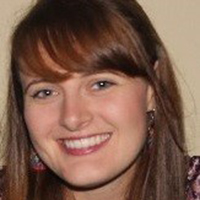
Explaining Everything
Brittney Merryweather
Explain Everything is an easy to use interactive whiteboard and screencasting app. Teachers or students can use the app to visually represent information, materials, and lessons. The app allows you to draw, type, and import images, videos, pdfs and PowerPoint presentations. The whole process can be recorded with or without narration. The app can be used by teachers as supplementary instruction, instructional review, media at a specific station during collaborative group work, and much more. The app can be used by students to demonstrate understanding of a concept or task, to record work with narration for later studying, and much more. Explain Everything allows you and your students to create dynamic multimedia content to support teaching and learning.
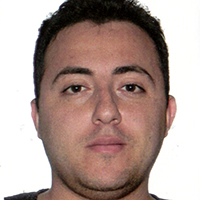
Applications for Teaching and Learning
Louai Rahal
I am an instructor, a tutor and a web developer, and I create web applications to support my teaching. I will be showing some of the tools I have created.
-
- Group Mind: A tool for randomly generating groups for group work.
- Growth Mindset:A website where content about the growth mindset is presented in a multimodal way (videos, links, tests, and summaries).
- Online French lessons: I am working on personalized exercises that generate a different exercise for different users.
My website includes more information about my teaching experience, my research and my work: http://louairahal.net/louai/index.html

Personal Response Devices
Reid Teichroeb
I will be discussing how i used personal response devices in my practicum and some research about it.
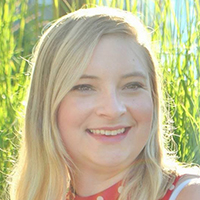
Using Geographic Information Systems in the Elementary Classroom
Amanda Younger
I am sharing how I have used GIS specifically ArcGIS with my grade 4/5 students to increase their understanding of Canadian Geography by choosing which information they wanted to display on their final output maps, and observing the relationship between different layers of information.
